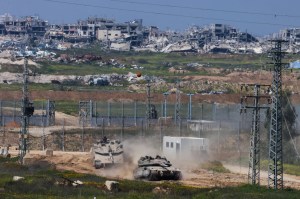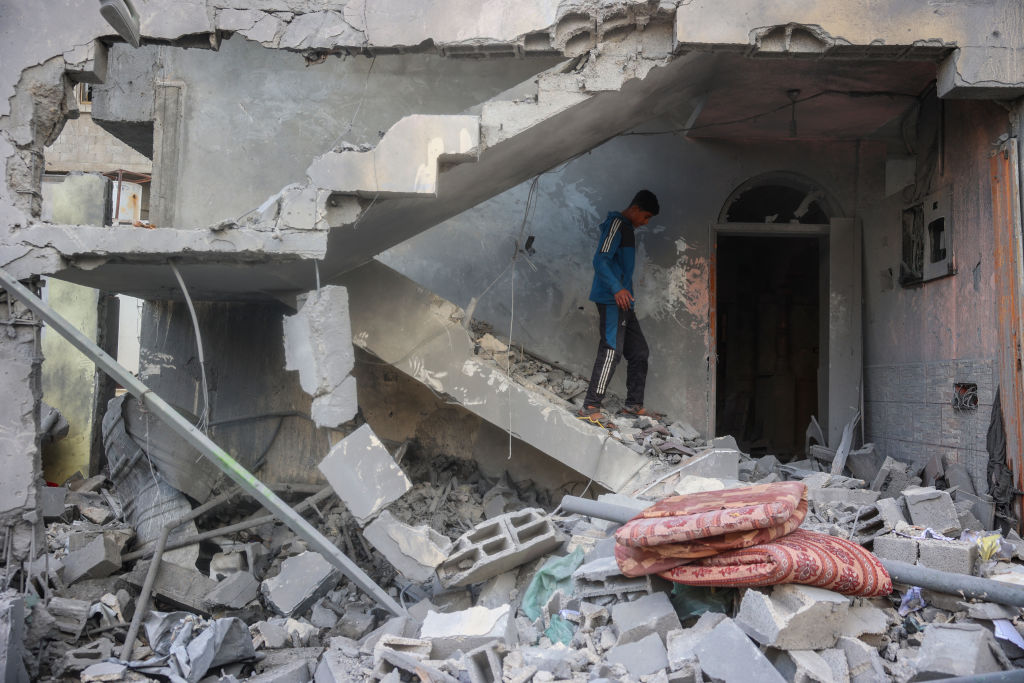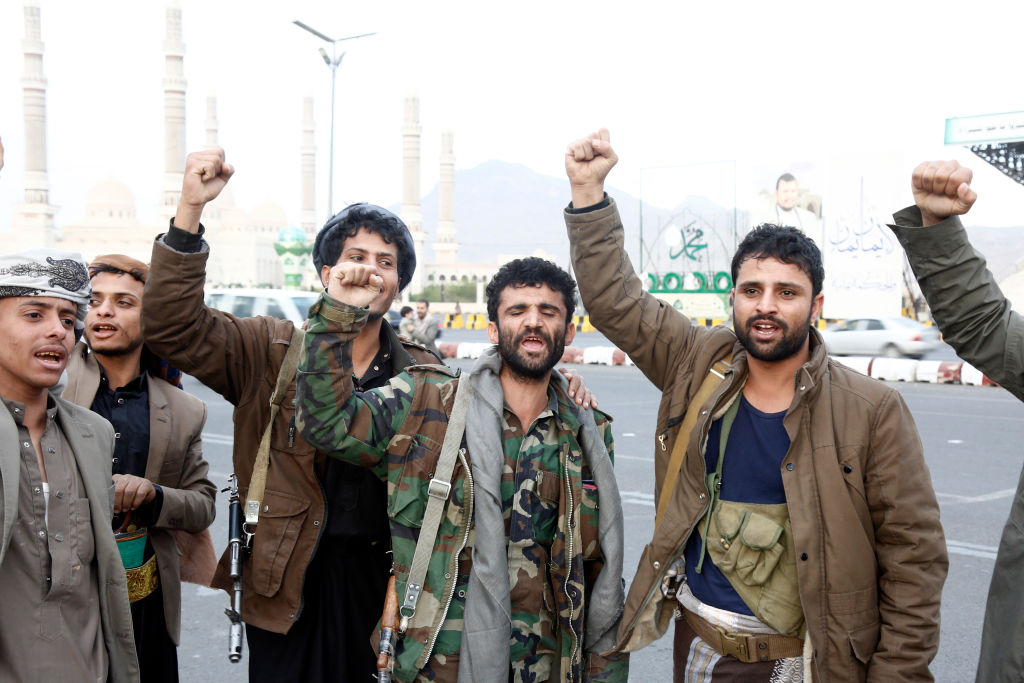The killing of twelve people, including several Hezbollah members, and the wounding of thousands more when 5,000 pagers simultaneously exploded in Lebanon yesterday represents an obvious tactical triumph for Israel (or whoever carried it out). The sight of members of the Iran-supported Shia Islamist group suddenly collapsing in agony while performing mundane daily tasks was met with great amusement by the movement’s many enemies across the region. Displaying the somewhat gleeful and malicious humor which characterizes all sides in the Levant, a variety of memes mocking the hapless victims of the grim beeper soon proliferated.
Hilarity aside, the operation displays the extent to which Hezbollah has been thoroughly penetrated by its opposite number. The organization will no doubt now undertake a thorough review of its security arrangements. It will be aware that the capabilities on display this week (and in the killings of high profile group officials such as Fuad Shukr and Mohammed Qassem al-Shaer over the past few months) can be activated in ways far more kinetic than have yet been witnessed.
Israel’s capabilities have not enabled Jerusalem to decisively alter the strategic picture
This episode has exposed Hezbollah’s vulnerabilities, and will bring reassurance to Israelis regarding the continued tactical flair and capacities of their security structures. Nevertheless, it does not alter the essential elements of the picture regarding Israel’s ongoing confrontation with Hezbollah on its northern border. A core and clearly established element of this picture, after all, is that Israel consistently displays tactical capacities superior to its Iran-backed enemy. But these capacities, up to and including the latest demonstration, have not enabled Jerusalem to decisively alter the strategic picture — which gives less reason for cheer.
As of now, Israel has effectively ceded control of a roughly three mile deep territory stretching the entire length of the Israel-Lebanese border as a result of Hezbollah’s daily missile and drone attacks across the border. Around 60,000 Israelis formerly resident in this area have departed their homes. Few show any sign of returning until the situation is resolved. If the guns cease firing but Hezbollah remains deployed down to the border line, a large percentage of these individuals and their families are still unlikely to return to their former places of residence.
This is a situation quite without precedent in Israel’s history. It has ominous implications. The fact that a corresponding or larger number of Lebanese residents of their country’s south have also left their homes doesn’t even the score. Hezbollah and its masters in Tehran have demonstrably operated with complete indifference to the fate of the local civilian populations in the areas they control and continue to do so. Their project, unlike that of Israel, does not depend on the consent of the governed.
In the exchanges across the border, Israel enjoys a clear upper hand. According to the current butchers’ bill, around 460 Hezbollah fighters have been killed at Israel’s hands since the present round of hostilities commenced on October 8 last year. Seventy-nine members of other organizations have also been killed, along with an untallied additional number of civilians. Israel has lost twenty soldiers and twenty-six civilians. But again, this doesn’t solve the problem of the depopulated north.
The return of residents to their northern border communities has now been defined as a war aim by Israel. Logic leads inexorably to the conclusion that only a major rearrangement of the situation north of the frontier — i.e. pushing Hezbollah’s forces away from the border line — can achieve this goal. But this brings with it a number of dilemmas.
The only instrument that can achieve this objective is Israel’s ground forces. But many of the ground units which would be needed for such a mission are currently exhausted and depleted after a year’s fighting in Gaza. Efforts at rapid replenishment are currently taking place. But this will take time. More fundamentally, a US re-supply of weapons would be needed to successfully carry out such an operation. But all indications suggest that Washington is determined to avoid conflict in the run up to the US elections in November.
Should an Israeli ground maneuver be attempted to push Hezbollah eighteen miles north, to the line of the Litani River, it may be assumed that the opposition would be fierce and attrition heavy. Is Israeli society, after the traumas of the last year, adequately prepared to launch such a venture?
Furthermore, holding such an area afterwards to keep Hezbollah’s fighters away from the border would bring challenges of its own. Technology has advanced from the last time Israel sought to maintain such a zone in the 1985-2000 period. Still, would a permanent IDF presence be required? Are there local partners available — of any kind? How would a repeat performance of Israel’s unsuccessful counter insurgency which led to the eventual withdrawal of IDF troops in 2000, be avoided?
The current noises in Israel regarding a ground operation should be taken seriously. The status quo on the northern border is not infinitely sustainable. Still, it is unclear if Israel has come up with adequate answers to the above questions yet.
Hezbollah has its own dilemmas. The affair of the exploding beepers is a deep humiliation for an organization which has always prided itself on conveying an image of competence and menace. It will surely be seeking revenge. Yet both Hezbollah and its Iranian masters have sought to avoid all-out confrontation against Israel over the last year. Iran does not wish to play its most significant asset in support of Hamas, a much more minor client. The dilemma now for Hezbollah will be how to retaliate to a level satisfactory to its supporters and patrons, while avoiding the descent to all-out war which a too-successful response might bring.
In its most recent retaliation, following the killing of Fuad Shukr in July, Hezbollah solved this problem by launching a failed, minor attack on Israeli military and intelligence installations in central Israel — and then claiming a fictional success. It may well be that the extent of the vulnerabilities displayed this week will require a more determined response. But then Hezbollah will need to take into account that such a response risks an escalation towards precisely the all-out conflict that it doesn’t want. Neither side has an easy set of decisions before it.
Hezbollah now faces the additional challenge of finding a new way to facilitate communication between its operatives. In the past, Middle Eastern terror groups have opted for ever more low-tech means of communication to get around their enemies’ technological superiority. In this regard, Hezbollah planners will no doubt be contemplating that past Israeli usage of exploding pens may make even this option more complicated than it might initially appear.
This article was originally published on The Spectator’s UK website.

























